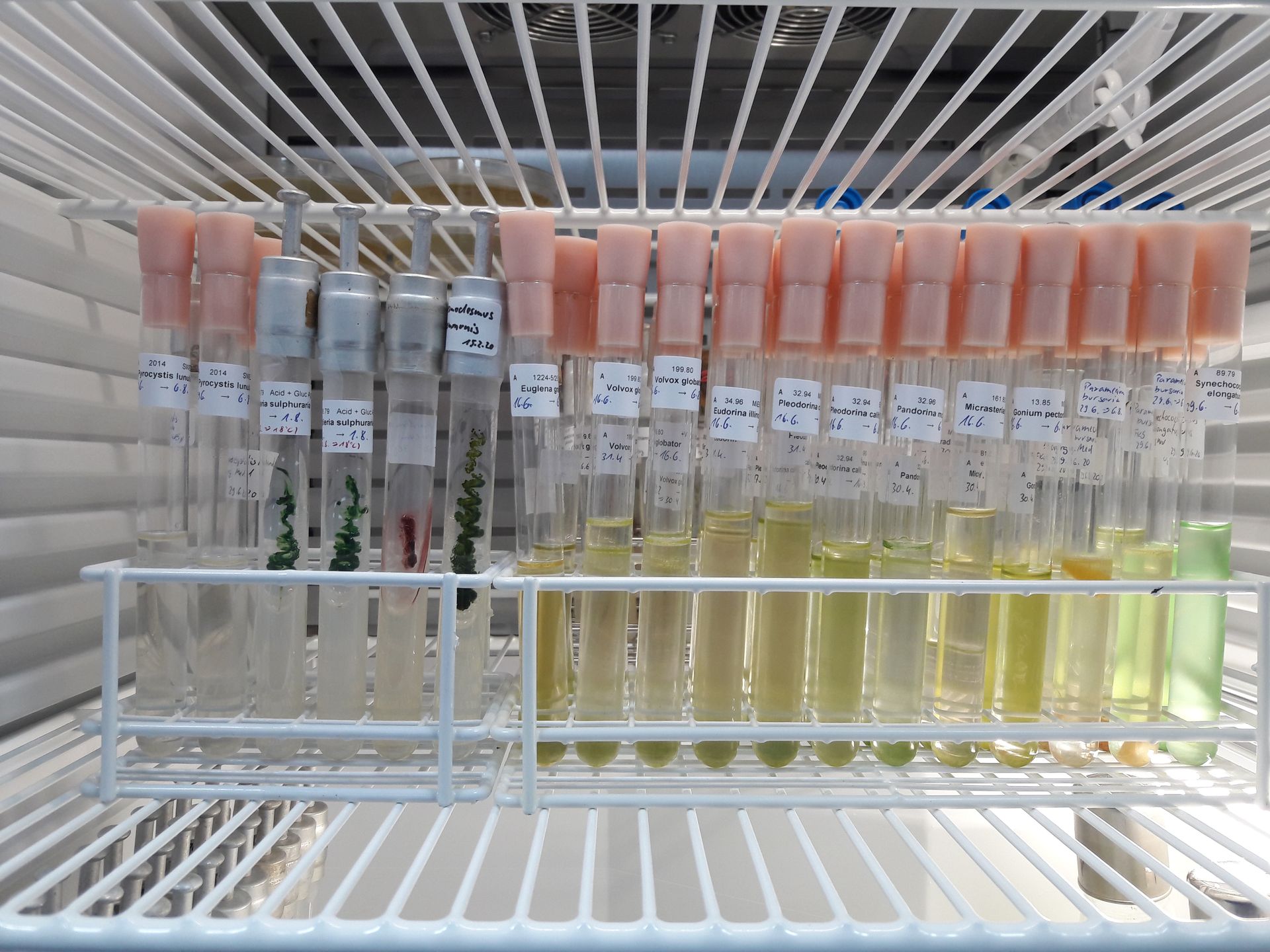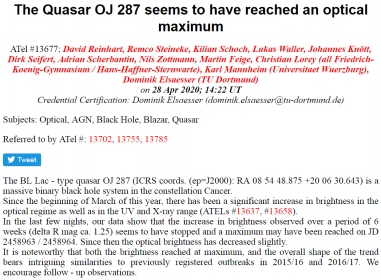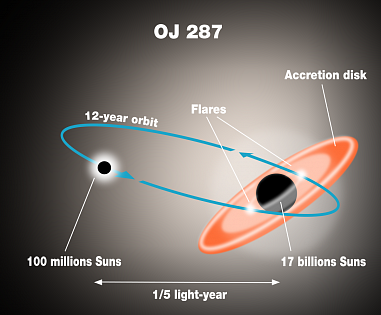The brightness of the blazar OJ 287 has been regularly determined by us since the beginning of the research project "AGN-Monitoring". From the end of March 2020 we could observe an increase in brightness of this object, which peaked on April 26th of 2020. During these almost six weeks the brightness of this Active Galaxy Nucleus (AGN) increased by 1.25 magnitudes and decreased again afterwards.
This discovery was published in an ad-hoc announcement in Astronomer's Telegram worldwide. The Astronomer's Telegram is an Internet platform where significant astronomical events are quickly spread around the world so that they are documented and can be verified all over the globe. The students' measurements and evaluations matched very well with the observations of other working groups.
The monitoring of AGN at the Hans Haffner Observatory is carried out in coordination with the MAGIC collaboration, which operates a telescope system for gamma radiation on the Canary Island of La Palma. Unfortunately, parallel measurements could not be performed there due to the corona shut-down.




